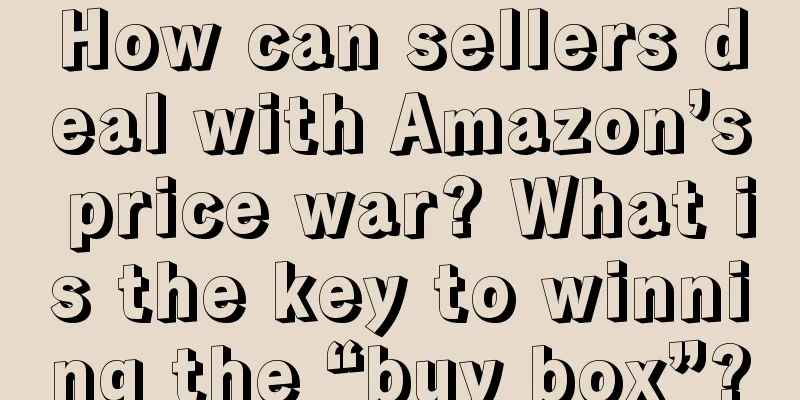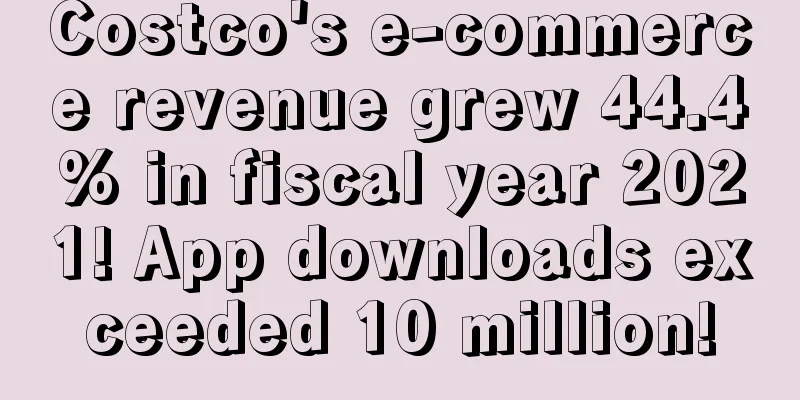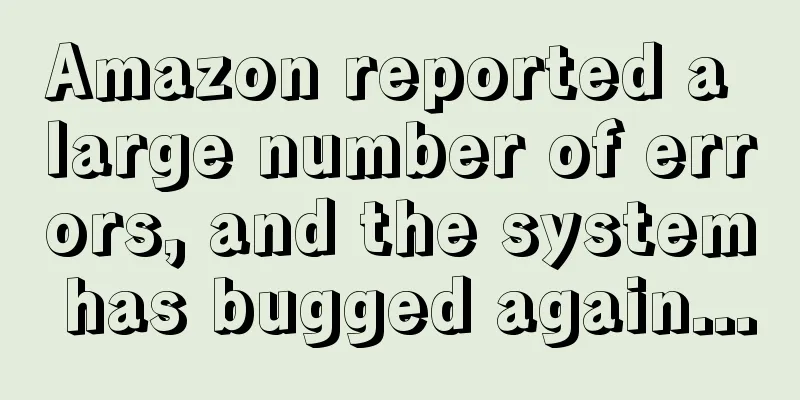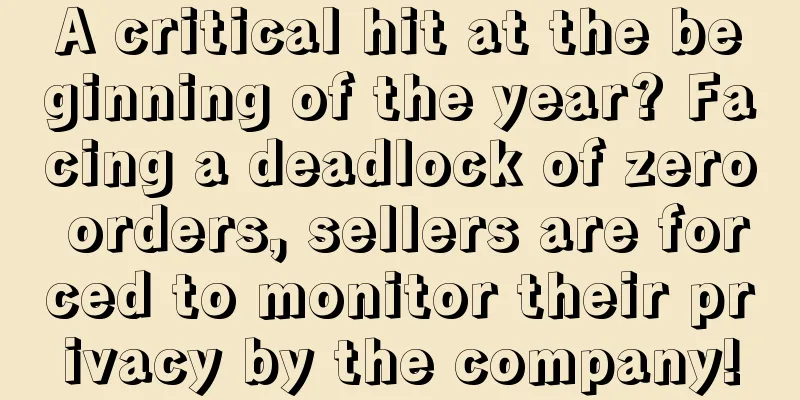How can sellers deal with Amazon’s price war? What is the key to winning the “buy box”?

|
It is estimated that more than one million sellers enter the Amazon marketplace each year to start their e-commerce business. As the number of online sellers grows, Amazon sellers are motivated to implement strategies to outperform their competitors. Pricing is one of the ways Amazon sellers practice their optimization and marketing strategies. In particular, sellers competing for the Buy Box will use Amazon Repricer. It is a common practice to implement dynamic pricing strategies to win more Amazon Buy Boxes.
Pricing: A Key Component of Amazon Business In retail e-commerce, pricing defines the value of an item and becomes a reference point for consumers as to whether or not to purchase it. In fact, price is the fastest and most efficient way for Amazon’s business to achieve profit, compared to unit volume. A simple calculation shows that a 1% increase in sales will only result in a 3.5% increase in profits. On the other hand, when you increase prices by 1%, profits will increase by 10%. Thus, reinforcing the fact that price adjustments are critical on Amazon. The price you price your inventory at can make or break your Amazon business. This is especially true today with the advent of price transparency, which makes your pricing visible to both online shoppers and competitors. Competitors who have easy access to your listing price are one of the catalysts for price wars. In this situation, Amazon sellers may repeatedly lower their listing prices to offer the cheapest price to Amazon shoppers. This practice can lead to further depletion of profit margins, so it’s important to avoid price wars and ensure profits. To continue optimizing your product pricing and refine your pricing strategy, you can use the Amazon Repricer.
What is the Amazon Price War? Generally speaking, a price war is simply an attempt by market players to undercut their competitors by continually lowering product prices to capture a larger market share. When Amazon sellers consciously or unconsciously apply the above operations to their Amazon business, they are already engaging in the so-called Amazon price war. In addition to making listing prices attractive to Amazon shoppers, some sellers believe that lowering prices to undercut competitors can help win the Amazon Buy Box, ultimately increasing sales. However, engaging in an Amazon price war can be a double-edged sword, especially if you intend to out-compete your competitors to the lowest price point. If unavoidable, price wars should be approached with caution, especially since “a 1% drop in price can reduce profits by more than 10%.”
How Sellers Can Deal with Amazon’s Price War Using price wars to thwart a competitor’s Buy Box advantage, an emotion-driven form of retaliatory price cuts, will inevitably lead to a sharp decline in profit margins. In fact, you don’t need to intentionally engage in an Amazon price war and risk your profits in the process. With proper strategic price management, and with the help of a reliable Amazon pricer, you can maximize your profitability without intentionally engaging in a price war. Here are some tips on how to deal with price wars on Amazon or other online selling platforms:
You can attract consumers by offering quantity discounts, bundle promotions, exclusive deals, membership programs, and other unique promotions that don’t necessarily equate to slashing prices. When it comes to Amazon, sellers can create product bundles made up of different items. These carefully considered combinations of goods offer convenience and value to shoppers. When it comes to repricing, you have three main options: 1) Manual Repricing 2) Rules-based pricing 3) Automatic pricing 1. Manual Repricing Manual pricing involves manually setting your list price based on your competitors’ prices. This type of repricing method is ideal when you have very few items in stock. To make this pricing method effective, you should also have a good grasp of market interactions, superb price management skills, and ample time for price monitoring. With manual pricing, it is essential to constantly monitor your competitors’ price changes. 2. Rules-based pricing On the other hand, a rule-based repricing approach is best used when you have a specific repricing goal in mind and do not have enough time to continuously monitor market price changes. Compared to a manual repricer, a rule-based Amazon repricer provides you with predefined rules to choose and set, which means sellers have to consider possible scenarios and solutions. Much like manual pricing, this type of pricing can lead to price wars because these repricers do not have the ability to look beyond one price change or predict future price changes based on competitor behavior. Some of these pricing rules include, but are not limited to, match lowest/highest price, follow related ASINs, and follow competitors, depending on the third-party repricer you are using. 3. Automatic repricing Finally, we have automated repricing methods, some of which use AI (Artificial Intelligence). This method employs an advanced pricing strategy that primarily involves computer algorithms to respond to various market factors to change the listing price. One of the reasons why automatic or AI algorithmic repricers are becoming increasingly popular among Amazon sellers is their ability to develop a successful strategy and deliver the best results. This can result in securing the Amazon Buy Box at a higher price. Not only that, learning algorithms also mean that sellers do not need to do any setup, but can just “set it and forget it.”
Repricing and the Buy Box are interrelated. Once your listing meets specific Amazon metrics (including competitive pricing), your offer will appear in the Buy Box, increasing sales conversion rates. The shopping basket algorithm only considers offers from sellers that are highly competitive in both quality and price. Although some sellers choose to evaluate market conditions and change prices manually, a large number of Amazon sellers or established sellers choose algorithmic pricing technology services to maintain a competitive advantage. Other Key Factors for Winning the Amazon Buy Box 80% of sales conversions come through the Buy Box, so winning the Amazon Buy Box is the fastest way to make money on Amazon. However, there are other factors you should consider when competing for the Amazon Buy Box. In addition to competitive pricing, the Amazon algorithm also evaluates other evaluation metrics, including:
To be eligible for the Buy Box, sellers must meet three conditions: the seller account type must be Professional, inventory and delivery metrics must be healthy, and the seller must have sufficient order volume. Implementation method The fulfillment method you choose can greatly impact your Buy Box win rate and eligibility recognition. For this reason, Amazon tends to award the Buy Box to sellers in the Fulfilled by Amazon or FBA program. This doesn’t mean that FBM sellers are ineligible to win the Buy Box, but rather that Amazon gives priority to FBA sellers on the same listing. Based on sellers’ experience, FBA is superior to the FBA program. In addition, new sellers under the FBM program are not automatically eligible for the Buy Box. FBM sellers must first achieve sufficient sales volume, which is determined by Amazon and varies by category.
Amazon is well-known in the e-commerce industry for being a customer-centric company. That’s why its Buy Box algorithm also considers specific customer service-related metrics when awarding the Buy Box. Being familiar with important seller metrics will also help you improve your Buy Box win rate. Some of the metrics that Amazon rates highly include order defect rate, cancellation rate, contact response time, and customer feedback rating. Familiarize yourself with Amazon’s selling policies and code of conduct to avoid violations and penalties that could prevent you from winning the Buy Box.
in conclusion: The profitability of your Amazon business depends largely on your pricing strategy. You can avoid price wars and win more Buy Boxes through strategic price optimization based on non-aggressive pricing strategies. (Source: Cross-border Black Technology) |
<<: Sales are booming! This category has grown by 100%! Sales have doubled in less than a year?
Recommend
The order has exploded! Biden will issue another 190 million! Each household can get up to 3,600 US dollars...
The recent platform environment is terrible. Big s...
Amazon Advertising General Practice
Some novices, and even some veterans, have made bi...
Fighting each other in the United States? The war between SHEIN and TEMU continues!
01 Litigation drama: a thrilling legal showdown! ...
What is Zaoxin Marketing? Zaoxin Marketing Review
Headquartered in Shenzhen, BeyondNext is an agency...
Warning! Warning! Amazon is strictly investigating this type of review invitation method!
Amazon sellers all know how important reviews are...
Amazon launches new features, and the return solution tool is upgraded again!
Normal, once there is data abnormality, such as s...
Little red flag warning! A large number of sellers have been scammed, and my brother-in-law is about to take action!
Recently, when sellers opened the Amazon backend,...
What is Dhgate? Dhgate Review
DHgate is the first website in China to provide a ...
Poshmark launches Smart List AI to speed up sellers’ listing process
It is learned that recently, according to foreign ...
What is VAT Services on Amazon? VAT Services on Amazon Review
VAT Services on Amazon is a VAT compliance solutio...
What is Traveloka? Traveloka Review
Traveloka is an Indonesian unicorn company and a l...
What is Cuckoo? Cuckoo Review
Cuckoo Information Technology mainly focuses on B2...
2023 North American e-commerce annual review: Amazon is still the uncrowned king
It is learned that Marketplace Pulse recently rele...
FBA warehouse epidemic leaked! Did Amazon intentionally conceal it?
Recently, warehouses have obviously had a serious...
What is Mercado Libre? Mercado Libre Review
Mercado Libre was founded in Uruguay in 1999. It r...









